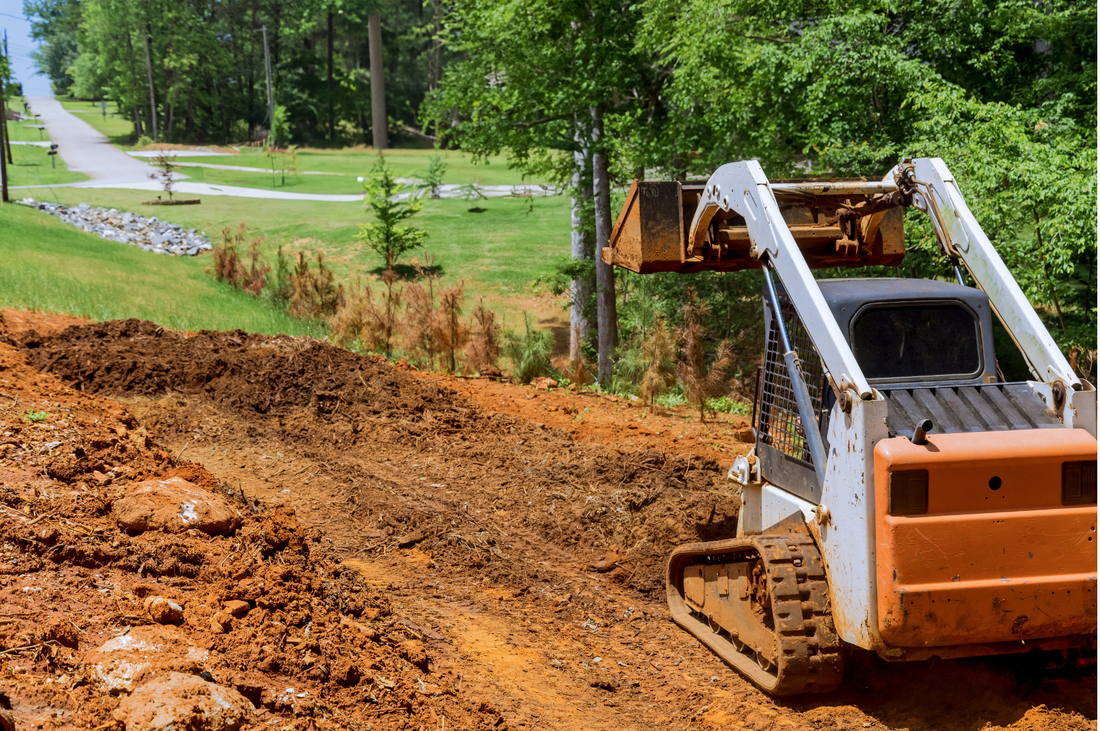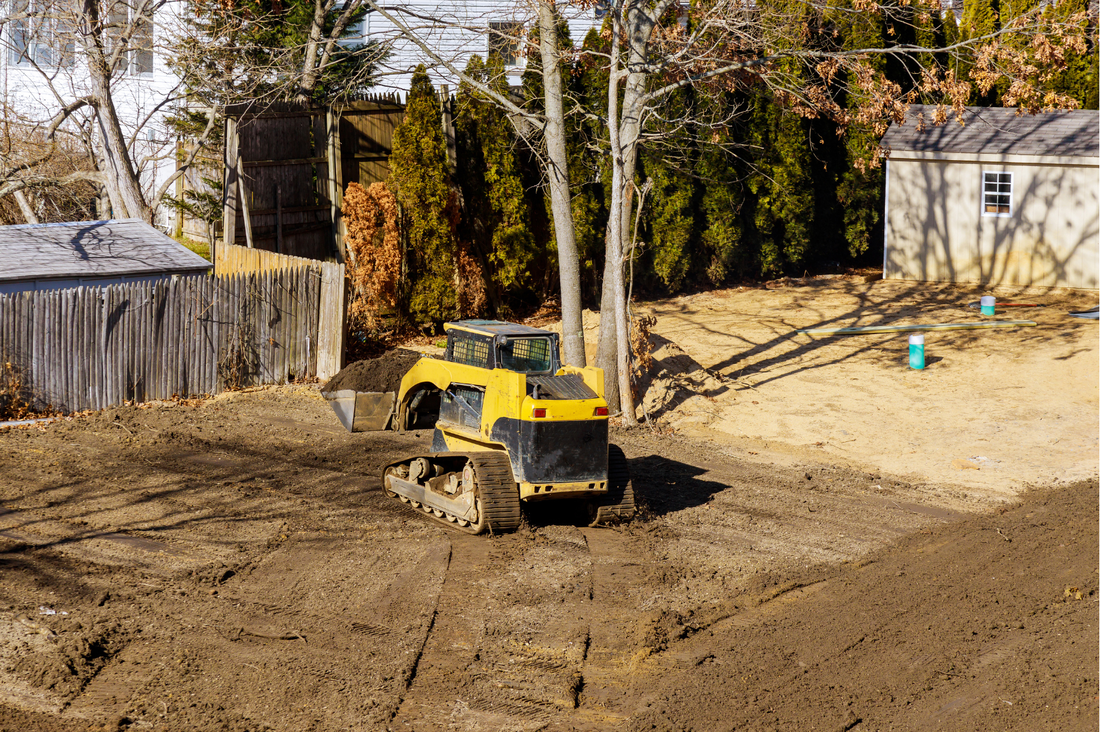|
A well-maintained lawn significantly enhances the beauty and value of your property. Beyond regular mowing and watering, a crucial, often-overlooked aspect of lawn care is ensuring the lawn remains level. Uneven lawns can be more than an aesthetic issue; they can also lead to practical problems, such as water pooling and difficulty mowing. This comprehensive guide will explore the signs that indicate your lawn needs leveling, the optimal timing for this task, the steps involved, and considerations for deciding whether to DIY or hire a professional.
Signs That Your Lawn Needs Leveling
Recognizing the need for leveling is the first step towards a lush lawn. Uneven patches, dips, and bumps not only detract from your lawn's visual appeal but also create practical challenges. Water pooling after rain or difficulty mowing due to uneven terrain are indicators it’s time to consider leveling. Regular visual inspections can help identify these problems early, preventing them from escalating.
Ideal Timing for Lawn Leveling
Timing is everything when it comes to maintaining the perfect lawn, especially when addressing the unevenness that can affect growth patterns, water drainage, and overall appearance. Leveling your lawn requires not just the right tools and techniques, but also timing the task to coincide with the lawn's natural growth cycles. Doing so ensures that the grass recovers quickly and continues to thrive. In the following sections, we'll explore the best seasons for lawn leveling and how to determine the most opportune moment to undertake this important aspect of lawn care.
Assessing Soil Conditions
A thorough assessment of soil conditions via testing is pivotal before beginning the leveling process. Soil tests reveal pH levels, nutrient content, and structure, offering insights essential for selecting appropriate leveling techniques and amendments. The interpretation of these results guides the modification process to ensure the health and durability of your lawn.
Steps to Leveling a Lawn
Leveling a lawn involves a series of methodical steps, starting with the preparation of the area. This preparatory phase is important for the success of the leveling process, as it sets the foundation for a smooth, even lawn surface.
DIY vs. Professional Lawn Leveling
While leveling a lawn is achievable as a DIY project, professional services offer advantages in efficiency and outcome due to specialized equipment and expertise. Consider your time, budget, and the project's scope when choosing between DIY and professional leveling services.
Opting for professional lawn leveling services is highly recommended for several compelling reasons that ensure a flawless and hassle-free experience. Here's why professional intervention often stands out as the preferred choice:
A level lawn not only boosts aesthetic appeal but also enhances functionality. Understanding when to level, recognizing the signs, and employing the correct techniques are crucial for achieving a vibrant, even lawn. Whether opting for a DIY approach or seeking professional assistance, prioritizing your lawn's health and beauty is key to enjoying a stunning outdoor space for years to come. Landscape Leveling Services by a Demolition Company
Struggling with an uneven lawn? Partner with a reputable demolition company offering landscape leveling services. Leveraging advanced equipment and techniques, we specialize in transforming uneven terrain into pristine, inviting landscapes for both residential and commercial properties. Tailored to meet your specific needs, our experienced team ensures a smooth, seamless lawn leveling process.
Contact us for a consultation and elevate your outdoor space today. Frequently Asked Questions (FAQs)
1. How often should I level my lawn?
Ideally, assess your lawn annually to determine the need for leveling. Major leveling is rarely needed more than once every few years unless there are specific issues causing unevenness.
2. What kind of topdressing material should I use for lawn leveling?
A mixture of sand, topsoil, and compost is commonly recommended for its balance of drainage and nutrient-rich properties suitable for most lawn types.
3. How much does professional lawn leveling cost?
Costs vary depending on the size of the area and the leveling degree required. Contact local services for accurate estimates.
4. Can lawn leveling fix drainage problems?
Yes, proper lawn leveling can help eliminate issues like water pooling by ensuring even distribution and proper runoff.
5. How do I maintain my lawn after leveling?
Continue regular lawn care practices, including watering, mowing, and fertilizing, to encourage strong and healthy growth.
[object Object]
0 Comments
In landscaping, achieving a level terrain is more than just a matter of aesthetics—it's a fundamental aspect of creating a functional and visually appealing outdoor space. Landscape leveling plays a pivotal role in ensuring proper drainage, preventing erosion, and maximizing the usability of your yard. In this comprehensive guide, we'll explore the importance, benefits, methods, and essential tips for successful landscape leveling. Understanding Landscape LevelingLandscape leveling adjusts the land's contour to create a smooth, even surface, using techniques such as grading, excavation, filling, and shaping. This process is crucial for achieving balance and symmetry in your landscape design, addressing slopes, uneven patches, or rough terrain to create a cohesive and inviting outdoor environment. Benefits of Landscape Leveling
Factors to Consider Before Landscape Leveling
Methods of Landscape Leveling
Steps to Perform Landscape Leveling
DIY vs. Professional Landscape LevelingWhile DIY projects can be rewarding, professional landscapers offer expertise, efficiency, and quality assurance, ensuring a flawless leveling outcome with their specialized equipment and knowledge. The Role of Demolition in Landscape LevelingAn often overlooked but critical aspect of landscape leveling is the demolition and removal of existing, unwanted structures or features within your outdoor space. For a landscaping project to truly transform an area, it may be necessary to clear away old buildings, concrete slabs, or other obstructions that hinder the ideal vision for the space. This is where partnering with a demolition company can be invaluable. Demolition professionals have the expertise and equipment necessary to safely and efficiently remove these structures. This step not only prepares the land for subsequent leveling and landscaping efforts but also ensures that the process adheres to local regulations and safety standards. Furthermore, a demolition company can provide insight into the recycling of materials and waste management, making your landscaping project not only effective but also environmentally responsible. By integrating demolition services into your landscaping project, you ensure a clean slate for your outdoor transformation, laying the groundwork for a successful landscape leveling process. Landscape leveling is crucial for achieving a functional, attractive, and sustainable outdoor space. By adhering to the principles and practices highlighted in this guide, you can significantly enhance your property's appearance and value, ensuring a beautifully leveled terrain for years to come. Ready to transform your outdoor space into the beautifully leveled and functional landscape of your dreams? San Antonio Demolition is here to clear the way for your next big project! Our skilled and experienced team is equipped to handle all your landscaping demolition needs, ensuring a clean slate and smooth start for your landscape leveling project. Contact us today to take the first step towards an impeccable outdoor transformation.Contact us today to take the first step towards an impeccable outdoor transformation. Your landscape leveling project deserves the best start possible, and San Antonio Demolition is here to deliver. Reach out now and turn your vision into reality! Frequently Asked Questions (FAQs)1. What is landscape leveling?
Landscape leveling is the process of reshaping land to a desired slope or flatness. It involves grading, excavating, filling, and sometimes installing retaining walls, all aimed at creating a uniform terrain for aesthetic and functional purposes. 2. Why is landscape leveling important?
Proper landscape leveling prevents drainage problems, enhances the usability of your outdoor space, and increases property value. It also sets the foundation for any landscaping design and installation projects. 3. Can I level my landscape on my own?
While some smaller landscape leveling projects can be a DIY task, larger projects require heavy machinery, technical know-how, and an understanding of soil and drainage that most homeowners don't possess. For complex projects, it’s advisable to hire professionals. 4. How often should I inspect my leveled landscape?
Perform a thorough inspection at least twice a year, in the spring and fall. Look for signs of erosion, drainage issues, or any shifts in the terrain. Regular inspections help you address problems early on. 5. What equipment is needed for landscape leveling?
Basic equipment includes shovels, rakes, and a wheelbarrow for small projects. Larger projects might require graders, excavators, dump trucks, and laser levels. Are you looking for best land leveling services In San Antonio? As your yard have uneven ground, teep hills and sharp drops in terrain. San Antonio TX Demolition has played an important role in the formation of such structure and pattern changes.
San Antonio TX Demolition is a family owned and operated demolition and excavation business based in San Antonio. We are known for our innovative, pinpointing and safe demolition services. We prefer to use operated equipment and our expertise to complete your job. Why you need land leveling: Owner loves flowers, plants and trees in their garden. And natural plants can help to add more attention to many types of features. Unfortunately, many people end up with the plants that will not take care of their land too much. Not only does it make it hard to handle it, but it also prevents them from getting into the amount of water. When you have a residential or commercial property, you have lots of concrete, drops and skins; you need a level of service. Our team has the right equipment and tools to help you make the best pitch for your home or office. We offer best and most affordable services to our customers. What services we give for land leveling?
Most homeowners do not realize that there is problem at their level unless they include something in their property. Whether they are going to obstacles for their new pools, sheds or even an extra room you need Land Leveling services. Our team can provide fast service and, to get the best results every time. When you need a company you can trust us. For more information contact us on Phone No: 210-702-2201 want to thank Corpus Christ Demolition for this article, we are partners on different projects and want to thank them for the article |
AuthorWrite something about yourself. No need to be fancy, just an overview. ArchivesCategories |
|
(210) 702-2201
|
Click to set custom HTML
|
|
2023@ Demolition Contractors San Antonio - Terms Of Use - Privacy



 RSS Feed
RSS Feed

